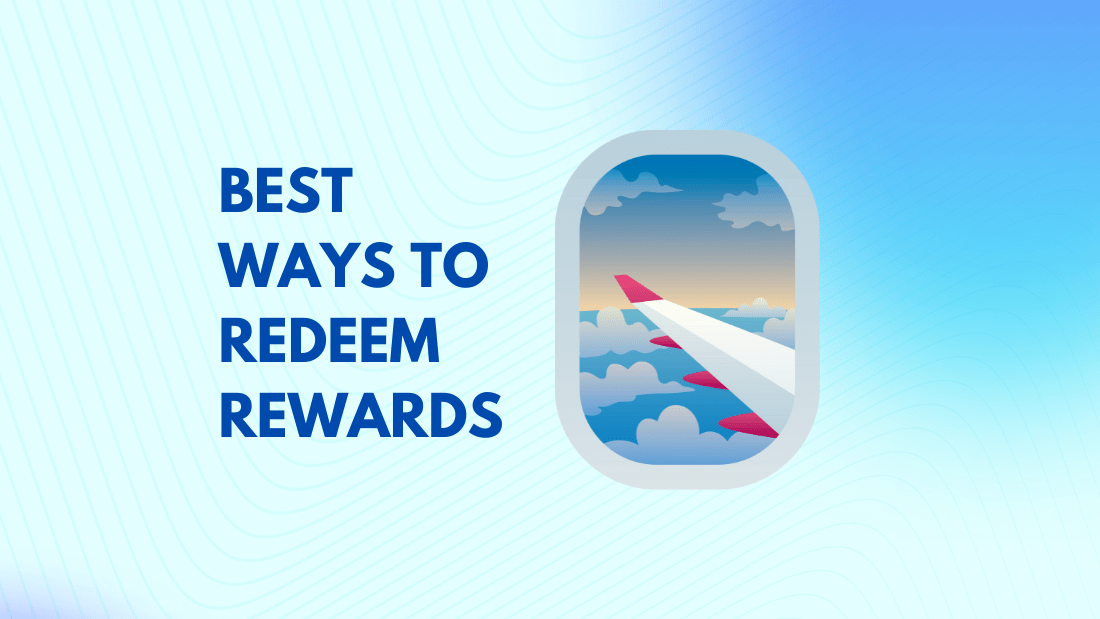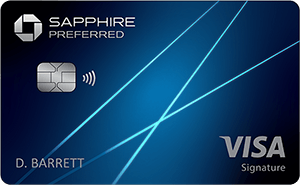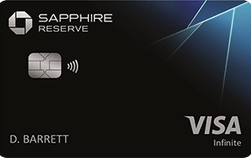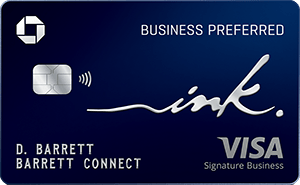Chase Ultimate Rewards Redemption Guide 2025: Maximize Value With Top Strategies
From Luxury Travel to Cash Back: Expert Comparison of All 5 Chase Ultimate Rewards Redemption Methods + Hidden Tips
By Sebastian Fung|Updated on 3/3/2025
Back
Chase Ultimate Rewards points are often considered a “gold standard” in the points and miles world, thanks to their flexibility and value. Whether you’re a seasoned traveler or just starting out, it’s important to understand all the ways you can redeem these points – and which options give you the best bang for your buck.
In this guide, we’ll break down the main redemption strategies and their pros and cons, from high-value airline transfers to simple cash back. The goal is to help you decide how to use your points in a way that fits your travel goals or financial needs.
Let’s dive into each and see how they work, with real-world examples and tips to maximize value (or avoid pitfalls).
1. Cash Back & Gift Cards (1 CPP)
Not everyone wants to deal with travel or even categories. Sometimes, you might just want cash from your points. Chase Ultimate Rewards allows you to redeem points for cash back – either as a statement credit or direct deposit into a bank account – at a flat rate. Additionally, you can redeem points for a wide selection of gift cards to various retailers and restaurants. These are more straightforward options but generally offer the lowest value per point (aside from some gift card promos). Let’s explore these:
Cash Back (Direct Redemption): This is the simplest redemption of all. 1 Chase Ultimate Rewards point = $0.01 when redeemed for cash. There’s no minimum (you can redeem even just 1 point for $0.01, though obviously you’d want to redeem more at a time). You can apply it as a statement credit on your card or transfer to a checking account. For example, 10,000 points = $100.
While it’s nice that your points have a guaranteed cash value, redeeming for cash isn’t ideal if you have premium cards that might enable you to get more value.
That said, cash is universally flexible. If you redeem 50,000 points for $500 cash, you can use that $500 for anything – paying bills, buying an item, investing, etc. There’s definitely a case where cashing out points is not a “bad” move: if you truly need the money or will put it to better use than travel.
Also, if any travel redemption or transfer would get you less than 1 cent, you’d be better off with cash. In practice, transfers to Marriott or IHG often get around 0.7 - 0.8 cents per point in value; you’d literally be better off taking cash and booking the hotel with money. It’s a good reference point: never use points for something that gives less value than just cashing out.
Gift Cards: Chase’s Ultimate Rewards portal has dozens of gift card options – from Amazon to Starbucks to department stores, gas stations, and airlines. The typical rate is also 1 cent per point. (e.g., 5,000 points for a $50 gift card, 10,000 for $100, etc.).
Gift cards are basically equivalent to cash in terms of value but with less flexibility (it has to be used with that vendor). The only exceptions are sales and promotions. Especially around holidays, certain gift cards are discounted – e.g., you might redeem 90,000 points for a $1000 Airbnb gift card (that’s 0.9 points per dollar instead of 1 point per dollar, effectively making your points worth ~1.11 cents per point).
When might gift cards be worth it? If you are definitely going to spend money at that merchant and there’s a sale on the gift card, where the value is above 1 cent.
However, be careful not to get a gift card you don’t have a plan for – it’s as good as cash only if you actually use it fully. An unused gift card or one that causes you to buy something you otherwise wouldn’t is not valuable.
One strategy to mention: If you have a Chase Freedom Unlimited® or Chase Freedom Flex® card, your points are earning points but it’s displayed as cash back. If you later decide to get the Chase Sapphire Preferred® Card, Chase Sapphire Reserve®, or Ink Business Preferred® Credit Card — then you can combine your points with those cards to get elevated value.
2. Shopping & Experiences (up to 1.5 cents)
Beyond cash back, Chase Ultimate Rewards points can be used for an array of other redemptions like shopping for merchandise (think Apple products, Amazon checkout, etc.) and accessing special experiences or events. These tend to be boutique or convenience redemptions – they might not give you great value for your points, but they offer additional ways to use them for fun stuff or big-ticket items without paying cash.
A few subcategories:
- Apple merchandise
- Amazon and other online shopping
- Chase’s exclusive events/experiences
- General merchandise through the portal
Apple Ultimate Rewards Store: Chase has a partnership that allows you to use points to buy Apple products (iPhones, MacBooks, iPads, Apple Watches, etc.) through an Apple Ultimate Rewards portal. Essentially, you shop Apple’s catalog via Chase’s site, and at checkout, you can pay with points. The redemption rate is usually 1 cent per point (100 points = $1 toward the Apple product).
So, a $1,000 MacBook would cost 100,000 points. Occasionally, Chase has offered limited-time promos; the most we’ve seen is up to 50% more (so that same MacBook might be 66,666 points, which implicitly is ~1.5 cents per point in value), but generally expect 1 cent in value.
Using points for Apple stuff can be tempting – who wouldn’t want a new gadget? And if you have a mountain of points, you might rationalize that you’d rather get a tangible item now than a flight later. It’s not the worst thing you can do with UR, especially during promotions, but consider that you might be trading a first-class flight for an iPhone.
Amazon Shop with Points: You can link your Chase Ultimate Rewards earning card to Amazon and use “Shop with Points” at checkout on Amazon.com. However, this is a terrible value in terms of rate: points are worth only 0.8 cents each on Amazon.
That means 100 points gives you $0.80. It’s essentially a 20% penalty compared to redeeming for cash. The only time it makes sense to use points on Amazon is when Amazon runs a targeted promotion like “Get $10 off your order by using at least 1 point.” In those cases, you could use just 1 point (worth $0.008, basically a fraction of a penny off) to trigger it, and Amazon would take $10 (or whatever the promo is) off your total. Those deals are great, but you should never use a significant amount of points at the 0.8 cents rate to pay for Amazon purchases.
Chase Experiences & Exclusive Events: Chase often sponsors special events – think VIP access to concerts, sports events (like the US Open tennis), dining experiences with celebrity chefs, or early movie screenings. Cardholders sometimes get early access or discounts on tickets. In the Ultimate Rewards portal, there’s an Experiences section. Here, you might see things like “Chef’s Table dinner for two – 30,000 points” or “VIP concert tickets – 15,000 points each,” etc. Typically, these redemptions also peg points at 1 cent value.
For example, if an event ticket costs $150, it might be 15,000 points. Some experiences might not have a clear cash price (like a private meet-and-greet), but Chase will still assign a points cost roughly equating to how they value it.
The value of these is subjective. If it’s something truly special to you, and you can use points to do it, go for it! Even if it’s 1 cent per point on paper, the memory or convenience might make it “worth it” to you. These are often things you can’t easily buy elsewhere or are curated for card members. Just remember, you are trading your points at a rate that’s likely lower than what you could get on travel. So the question is, would you rather have that experience or, say, $X towards a trip? Sometimes, the experience wins out, and that’s okay.
Merchandise via Chase’s Portal: Aside from Apple, the Ultimate Rewards site sometimes has a general merchandise catalog – electronics, home goods, etc. This isn’t heavily promoted nowadays (it was a bigger thing in the past with many credit card rewards catalogs). If available, merchandise usually gives about 0.8 to 1.0 cents per point, often the lower end. And the prices might not be the cheapest you could find (they might list an HDTV for $500 that you could find on sale for $400 elsewhere, meaning if you spent 50k points for it you effectively got only $400 value, or 0.8 cents per point). For the most part, you can consider merchandise redemptions to be among the worst value uses of points unless there’s a specific sale.
In summary, outside of promotions for Apple, this option is more about convenience or accessing something unique rather than maximizing financial value.
3. Pay Yourself Back (up to 1.5 CPP)
Chase’s Pay Yourself Back is a newer (and very innovative) way to use Ultimate Rewards points, introduced in 2020 when travel was on pause. It allows you to redeem points for statement credits against certain categories of purchases – essentially “erasing” those purchases from your credit card bill. The twist is that Chase offers a bonus value (similar to the travel portal) on those redemptions, making your points worth up to 1.25 cents, but for everyday expenses instead of travel.
How it works: If you have a Chase Sapphire Reserve®, Chase Sapphire Preferred® Card, or Ink Business Preferred® Credit Card, you can go into your Ultimate Rewards account and choose Pay Yourself Back. There, you’ll see eligible transactions from the past 90 days in specific categories. You can then apply points to wipe out all or part of those charges. The categories have rotated over time. For example, common everyday categories like gas, utilities, dining, or even your annual fee, often at 1.25 cents for the Chase Sapphire Reserve®.
When is Pay Yourself Back a good alternative? The key benefit is flexibility. You’re not tied to travel at all. It’s effectively a way to get cash-back value above 1 cent per point (something most other cards don’t offer).
- If You’re Not Traveling Much: Maybe you’ve racked up a lot of points but you’re not ready or able to travel in the near term. Rather than redeeming for just 1 cent each as cash, you can redeem for 1.25 to 1.5 cent on things like groceries, dining, or other bills. This is great for cardholders who want to extract solid value without stepping on a plane.
- When Categories Align with Your Spending: At times, Pay Yourself Back categories have been very broad – e.g., for a long while grocery stores and dining. These are huge everyday spend areas for many. If you know you spend a lot in a category that’s eligible, you can freely use points to cover those charges at great value.
- For Annual Fees or Other Big Bills: Chase has at times allowed card annual fees to be offset via Pay Yourself Back. If you’re flush with points, you might do that to save cash, effectively “paying” your fee with points.
Why not just redeem for cash back normally? The difference is the rate. Normally, Chase Ultimate Rewards cash out = 1 cent each. Pay Yourself Back gives upwards of 1.25 cents in select categories. That’s a 25% boost in value, which is significant.
The main limitation is categories change, and you may need to wait for ones that are easier to use for your spend and behavior.
Overall, Pay Yourself Back is like having a safety net or alternative path for your Chase Ultimate Rewards points. That ensures you never get less than a solid value for your points.
4. Booking Through the Chase Travel℠ Portal
Chase’s travel portal is essentially an online travel agency (powered by Expedia) where you can book flights, hotels, car rentals, and more using your Ultimate Rewards points (or a mix of points and cash). Instead of converting points into airline or hotel currencies, you use them directly as a payment method. The value you get per point depends on which Chase card you hold:
- Chase Sapphire Reserve®: Points are worth 1.5 cents each in the portal. This is the highest rate – effectively a 50% bonus compared to basic points. For example, 10,000 Chase Ultimate Rewards points = $150 toward a flight or hotel booking via the portal.
- Chase Sapphire Preferred® Card or Ink Business Preferred® Credit Card: Points are worth 1.25 cents each in the portal. (That’s a 25% bonus.) So 10,000 points = $125 in travel.
- Other Chase Ultimate Rewards earning cards: These generally don’t have access to the portal at boosted rates unless paired with a premium card.
Chase Sapphire Preferred® Card
Earn 100,000 bonus points after you spend $5,000 on purchases in the first 3 months from account opening.
The Chase Sapphire Preferred® Card is ideal for those optimizing for cash back or travel. Redeem Chase Ultimate Rewards for cash back at 1.25x on select categories through Pay Yourself Back or travel via Chase Travel℠. The card is also a basic travel card with good spend multipliers and benefits like no foreign transaction fees and primary collision damage waiver (terms apply).
Chase Sapphire Reserve®
Earn 60,000 bonus points after you spend $4,000 on purchases in the first 3 months from account opening.
The Chase Sapphire Reserve® is a strong premium card if you care about earning points or benefits when you travel. Despite the $550 annual fee, the $300 travel credit, Priority Pass membership, and travel insurances make the card worth considering.
Ink Business Preferred® Credit Card
Earn 90,000 bonus points after you spend $8,000 on purchases in the first 3 months from account opening.
The Ink Business Preferred® Credit Card is a great option if you spend a lot in business categories and want to get elevated value from your Ultimate Reward points.
Pro tip: If you have points (cash back) from one of the Chase Freedom Unlimited® or Chase Freedom Flex®, you can transfer to a premium card to get elevated value.
Using the Chase Travel Portal feels much like using Kayak or Expedia: you search for flights or hotels on your desired dates, see the prices in dollars, and have the option to apply points at checkout. You can pay entirely with points or do a split (e.g., use some points and pay the rest on your card). There are no blackout dates or award seat restrictions – if a seat for sale or a hotel room is available for cash, you can book it with points. This is a major advantage over traditional airline miles in terms of convenience and flexibility
When does booking through the portal make sense? Generally, when the cash price of travel is low or reasonable, using the portal can be a great deal.
- Cheap Domestic Flights: Suppose you find a cross-country flight for $250 round-trip in economy. The upside from points is minimal here unless the redemption cost is low. The benefit of this option is that there’s no need to hunt award space; book any open seat.
- Hotels – Especially Non-Chains or When You Don’t Have Status: Let’s say you want to book a boutique hotel or an Airbnb-style accommodation that isn’t part of a chain. You can use the Chase Travel to book some of these. Or maybe you’re looking at a Marriott hotel where a night costs $200. Through the portal with CSR, that’s ~13,334 points. If that same hotel would cost 35,000 Marriott points (transferred from UR) to book as an award, you’re clearly better off using 13k through the portal (and you’d earn Marriott points on the stay because it’s a paid rate!).
- Rental Cars, Trains, Cruises, Activities: These are travel costs you typically can’t cover with airline/hotel points at all. Through the portal, you can use your points to pay for rental cars, train tickets, cruises, or even tours and activities.
- When You Have Excess Points or Limited Travel Plans: If you’ve accumulated a lot of points and don’t have specific plans for glamorous first-class travel, the portal is an easy way to get solid value without much effort. You’ll get a guaranteed 1.25 to 1.5 cents per point towards travel with zero hassle, which is perfect for economy travel, short trips, or people who want simplicity.
Another consideration: booking through the portal can sometimes complicate changes or issues. If you need to change or cancel a flight, you often have to deal with Chase Travel (Expedia) as the middleman, which can be a bit of a headache versus dealing directly with an airline or hotel. Any refunds in points, etc., have to go through Chase. It generally works out, but it’s another layer of complexity and risk.
In summary, the Chase Travel Portal is a fantastic tool for getting easy value from your Chase Ultimate Rewards points. It shines for economy flights, domestic travel, and situations where awards don’t make sense. Many people use a hybrid approach: transfer points to partners for high-value international premium awards but use the portal for everything else (cheap flights, hotels where transferring isn’t worthwhile, etc.). This way, you ensure you’re always getting at least acceptable value for your points.
If you want a hassle-free redemption or need to book travel that points can’t otherwise cover, the portal is your friend. Just always compare: how many points would it cost via portal vs via a transfer? A quick calculation can show you which is the better deal for a given booking.
5. Transfer to Partners
One of the most valuable uses of Chase Ultimate Rewards points is transferring them to airline frequent flyer and hotel programs.
Outside of promotions, Chase points transfer at a 1:1 rate, and there are 14 partners.
Airline Partners:
- Aer Lingus AerClub
- Air Canada Aeroplan
- Air France-KLM Flying Blue
- British Airways Executive Club
- Emirates Skywards
- Iberia Plus
- JetBlue TrueBlue
- Singapore Airlines KrisFlyer
- Southwest Airlines Rapid Rewards
- United Airlines MileagePlus
- Virgin Atlantic Flying Club
Hotel Partners:
- IHG One Rewards
- Marriott Bonvoy
- World of Hyatt
Why is this so valuable? Airline miles can often be redeemed for flights at a much higher cents-per-point value than the fixed value you get through Chase’s own portal or cash back. In general, you’ll get the best value by transferring points to airline (or hotel) partners for travel redemptions.
Some of the best redemptions include:
- ANA First or Business Class via Virgin Atlantic
- Singapore First Class Suites
- Lufthansa First Class via Aeroplan or United
Not all transfers are made equal. Programs like Marriott Bonvoy and IHG One Rewards almost never make sense to transfer to. Most of the time, you’re getting value in the 0.8 CPP range, meaning you’re better off redeeming your points for cash back.
Other options that might not make sense are Southwest Airlines Rapid Rewards and JetBlue TrueBlue, which have revenue-based award pricing. Those are straightforward: if a flight’s cash fare is cheap, the points needed are also low. Southwest and JetBlue points are generally worth about 1.4 to 1.5 cents.
Sometimes, you’re better off booking these flights through Chase Travel. The one exception is perks like the Southwest Companion Pass.
How to Transfer: It’s easy to initiate transfers on Chase’s Ultimate Rewards website – select your partner, enter your loyalty account number, and choose how many points (in 1,000-point increments) to send over.
Transfers are generally instant or very quick for most partners (often under 5 minutes for United, BA, Hyatt, etc., whereas Singapore can take ~2 days). You’ll want to have an account with that airline program set up in advance.
Important: Transfers are one-way and irreversible. Once you move points to, say, United or Singapore, you cannot turn them back into Chase points. That means you should wait to transfer until you have a specific redemption lined up and you’ve checked that award space is available. If you transfer speculatively and the award seat disappears, you could be stuck with miles you might not use.
Pros:
- Outstanding Value Potential: By leveraging airline award charts and promos, you can easily get 2+ cents per point, and sometimes north of 5 to 10 cents on luxury flights. This far exceeds the fixed value of 1.0 to 1.5 cents via other methods.
- Access to Premium Travel: Transfer partners unlock aspirational travel experiences – think business and first class flights or bucket-list destinations – that might be unaffordable with cash. You can turn your points into life-long memories (flying in a suite or a lie-flat bed, for example).
- Wide Range of Partners/Alliances: With 11 airline partners across all three major alliances (Star Alliance, Oneworld, SkyTeam), you can get almost anywhere. For instance, even though Chase doesn’t partner with American Airlines directly, you can use British Airways Avios or Iberia Avios to book American flights, or use Aeroplan to book dozens of Star Alliance airlines. Chase Ultimate Rewards points are extremely flexible for travel when used this way.
- Occasional Transfer Bonuses: Sometimes Chase offers promo bonuses. These can sweeten the deal and improve your value even more (though such bonuses are not constant; they pop up a few times a year for select programs).
Cons:
- Complexity & Learning Curve: Maximizing value via transfers requires understanding different frequent flyer programs, award charts, and routing rules. Each partner has quirks – for example, finding award space can be like searching for a needle in a haystack on popular routes. Beginners might find this daunting compared to simply clicking “Redeem for cash/travel” on Chase’s site.
- Transfers Are Final: As mentioned, you can’t reverse a transfer. If you miscalculate or plans change, you might be stuck with miles in an airline program that you can’t easily use. You lose the flexibility that points have when they’re still in your Chase account.
- Potential Fees/Surcharges: Some redemptions come with out-of-pocket costs like taxes and fuel surcharges. For example, booking British Airways flights with Avios can incur hundreds of dollars in fees, which eats into the value of your points. Other programs like Aeroplan or Emirates may pass on airline surcharges too. It’s important to factor in fees.
- Availability Constraints: Not every flight will be available for award booking. Airlines limit award seats, especially in premium cabins. It can be frustrating to transfer points expecting to book an award, only to find no seats open. Flexibility with travel dates or routes is often needed to get the best awards.
- Devaluation Risk: Airlines can devalue their award charts without much notice – meaning the miles you transferred might suddenly be worth less (require more miles for the same flight). We’ve seen programs like Singapore KrisFlyer and British Airways Avios hike award prices. Holding points in Chase until needed is a way to hedge this, but once transferred, you’re exposed to that program’s inflation.
Despite the cons, transferring to airlines is generally the most recommended way to use Ultimate Rewards for travel enthusiasts, because the value and experiences you can get are hard to beat. If you put in a bit of research and planning, your points can take you far – literally and figuratively.
Final Thoughts: Choosing the Best Use for You
Chase Ultimate Rewards points are incredibly versatile – few other loyalty currencies let you do this much. From flying in luxury cabins to enjoying free nights at five-star hotels to simply offsetting your everyday expenses or buying the latest iPhone, Chase Ultimate Rewards points can be tailored to your needs. The “best” use of points ultimately depends on your goals and lifestyle:
- If you love travel and want to maximize value: focus on transfers to airline (and Hyatt) partners. That’s where you unlock outsized rewards worth far more than a penny per point. Just be ready to put in a bit of effort and flexibility.
- If you travel occasionally or moderately: mix it up. Maybe transfer for those special trips, but use the Chase Travel or Pay Yourself Back for domestic travel and everyday redemptions. You’ll ensure a solid 1.25 to 1.5 cents baseline value while still having the option to splurge on a high-value transfer when the opportunity arises.
- If you rarely travel or prefer cashback: leverage Pay Yourself Back whenever possible to get upwards of 1.25 cents in value on your non-travel needs.
In all cases, remember that points are a tool to enhance your life. The reason we seek to maximize value is so we can do more with a limited amount of points – whether that’s taking an extra trip or saving money on something we’d otherwise have to pay for. It’s okay to occasionally use points in a suboptimal way if it makes sense for you (maybe you value simplicity or timing over squeezing every drop of value). The good thing about Chase Ultimate Rewards is that, with so many options, you can always find a use that gives you at least decent value, and often great value.
One final tip: try to get at least 1.5 cents per point whenever you can (since that’s easily achievable via the portal for Chase Sapphire Reserve® holders). If you aim for that benchmark, you’ll know you’re doing well. Anything above that (through smart transfers) is a bonus and what makes this hobby exciting.
To sum up, Chase Ultimate Rewards points are only as useful as the rewards or savings they generate for you. By understanding all the ways to use them – and their pros and cons – you can ensure that every point you earn goes towards something meaningful, be it a dream vacation, a free night out, or simply peace of mind from a lower credit card bill. And that’s the point of points, after all. Safe travels and happy redeeming!
All information about the Chase Sapphire Reserve®, Chase Sapphire Preferred® Card, Ink Business Preferred® Credit Card, Chase Freedom Unlimited®, and Chase Freedom Flex® has been collected independently by cardonomics.com. The Chase cards are no longer available through cardonomics.com.




